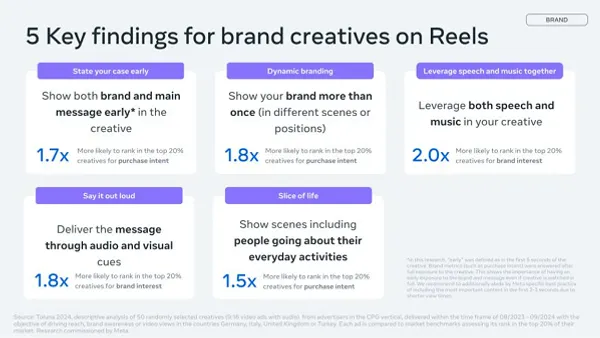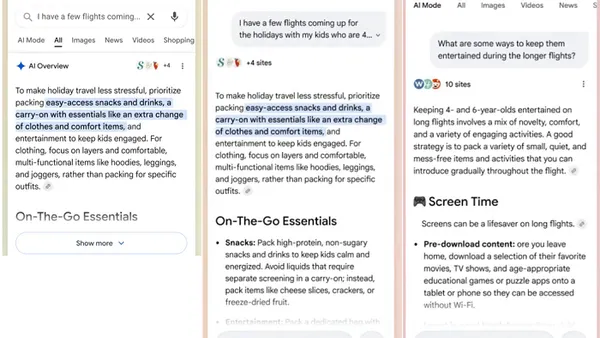This weekend, I went to my usual barber shop to get a haircut. When I got done, my barber gave me a customer rewards card for one free haircut after I get nine. Interestingly, I've been going to this same barber shop for 10 years and it's the first time they've started a rewards program of any kind.
The purpose of such a program is to keep the customers returning. It's a simple tactic to create stickiness by recompensing the loyal clients.
This is a proven marketing strategy that increases the impression of value - the trick is knowing what value means to your customers.
What Does Value Mean To Your Customers?
Most business owners already understand the importance of continually adding value to their business. Companies must focus on:
- Increasing customer retention
- Knowing what value means to their customers
So what does value mean to your prospective buyers? Is it the competitive pricing? The free add-on services you provide? Or is it the customer loyalty program?
The answer: focus on customer needs and always demonstrate value through trust. In my article on "How Opinions Disrupt and Transform," I observed that public opinions are good indicators of what's important to consumers, especially when opinions shift from "wants" to "needs" like it is now.
Creating value is about staying relevant in your customer's minds
You're not going to stop a consumer from purchasing generic soup over Campbell's or picking up no-name tissues over Kleenex. You can either compete on price, value or both.
Here is a sample comparison for the two types of customers:
Buy Name Brand- Quality is priority
- Price is important but not the main concern, it should meet my needs
- Had good experience in the past, going to stick with what I know
- Saw lots of marketing about it, going to try it
- Heard good things about it from trusted source
Buy Generic Brand
- Price is priority
- Quality is important but I'll settle for second - it should meet my budget
- Had good experience with generic brands in other categories
- I may get more value with generic brands since all the money goes into the product instead of marketing
- Fits my basic needs - I am willing to try if it means I save money
Clearly the two types of customers have very different needs. Depending on the product or service, a customer may choose name brand at times and generic in other circumstances. Pricing competition will shrink profit margins over time. Competing on value doesn't guarantee your market share when there is a change in the perception of value. This goes back to knowing your customer's needs and bridging the gap between their needs and wants.
For example: a few years back Coca-Cola started selling the 8 ounce mini-cans. They anticipated the consumer's shift towards counting calories and becoming more health conscious.
Per ounce, the mini-can isn't cheaper than the regular can. In some cases the price could even be the same as the regular 12 ounce can.
Why would someone would pay the same for less? Don't we all want a deal? Coke did its homework and found that the mini-cans reduced the amount of guilt that a consumer felt for snacking while minimizing the chances of overeating. Coke realized that consumers were no longer relying on the value-for-money as the sole factor for deciding to buy. Instead, consumers wanted to eat smaller portions-particularly in the sub-100 calories area which Kraft originally started with its mini snack packs of chips, cookies and crackers.
The company understood the needs of their customers and they provided a solution to solve their problem without loosing their brand integrity or value. The product is still the same...the portions are just smaller.
In similar fashion, the smaller portion strategy has recently been implemented by many fast food chains. Jack-in-the-Box's "mini sirloin burgers," Burger king's "BK Burger Shots" and Quiznos "Toasty Torpedo," are all tactics to tempt consumer...consumers who are spending less on meals away from home due to the recession-NOT for health reasons.
8 Tips to Increase Your Brand Value
Here are 8 tips on what you can do to have an immediate impact on adding value to your brand:
- Stay on top of your customer needs - Be "high touch" with your A-level customers, build solid relationships, and keep tabs on their problems. Regular customer visits, reviews and network events are great ways to strengthen the relationship and expand your network at the same time.
- Be visible to your customers - Make sure they're continually aware of your value; try to remind them of your value strategically. Offering an updated version of your product or tagging on a free service are good ways of letting your customer know you are constantly improving. Convince your customer that your existence makes their lives easier.
- Know your competition - Always be on the lookout for what others are doing out there. Be ready to explain your value proposition versus your competitors'. You must be able to provide the facts to back up your claims. It will make you more competitive-just like how all the restaurants are offering smaller portion meals in their own way.
- Go the extra mile - Do things that are outside the scope of your business. Go above and beyond your normal routine by solving their "other" problems. This will help you stand out from the competition.
- Reward loyalty - Similar to the rewards program, give your customer something more for sticking with you or using your products and services. It could be tickets to a baseball game, gift certificates or discounts for doing business with you in the future.
- Try new ideas - If you're in a highly commoditized market, you need to think about where you make your profits. A lot of times there is no point in competing on price or service alone. Try new ideas like the "freemium" model where it may be worth it to give some of your products or services for free and charge for value-adds or premium account later. Gmail is free because Google makes their money from ads displayed in Gmail, giving them more advertising channels. Some Apple iPhone basic apps are free because they have a full version that will cost money.
- Improve experience - The entire experience in doing business with your company should be present from start to finish. Try to make every step as frictionless as possible and think from your customer's perspective. They should know they can contact you with their concerns and that you will respond quickly and effectively. This also creates great leverage for word of mouth marketing.
- Include a human element - Many companies don't focus enough on humanizing their brand. As a result, customers can feel out of touch. They need to feel like they are more than customers. Logos, slogans, taglines and websites are just references- they're marketing vehicles. Besides receiving your newsletters, brochures, emails and phone calls, allowing your customer to reach you in other engaging ways can help your company grow. Don't be afraid to be creative about it; throw events, create a blog, or connect via social networking tools such as Twitter, LinkedIn and Facebook.
Share how you add value to your brand, what are the most effective methods? Add your comments here.
Related posts:
- 7 Keys to Creating Social Media Strategy for Your Brand
- What is Social Media and Why Should I use it
- Building Brand Trust with Design
Link to original post











